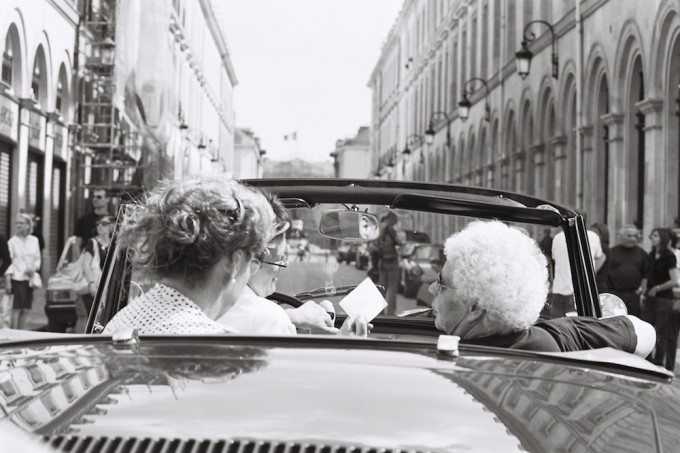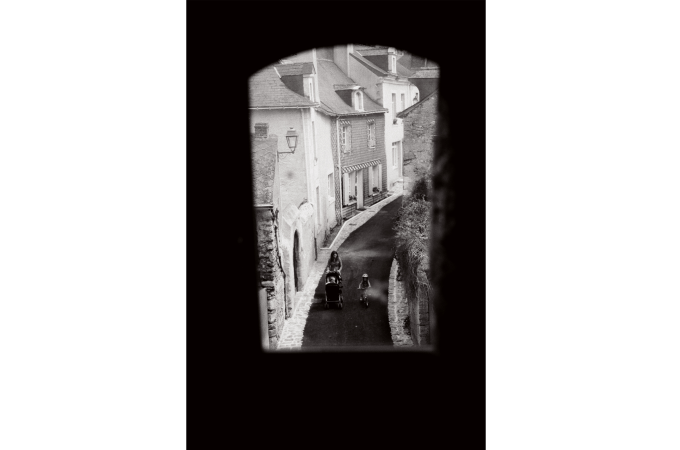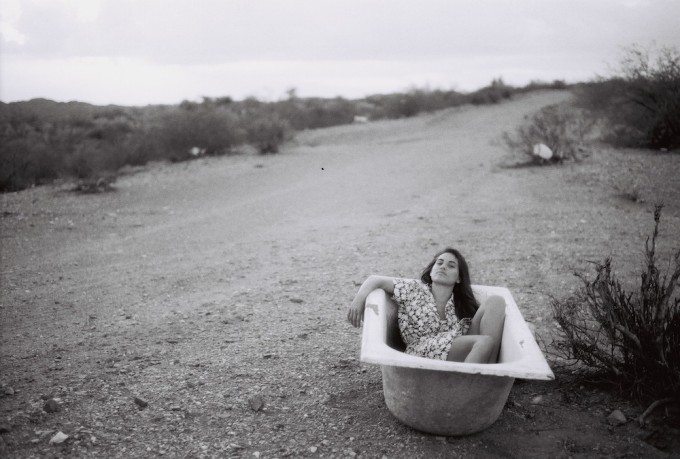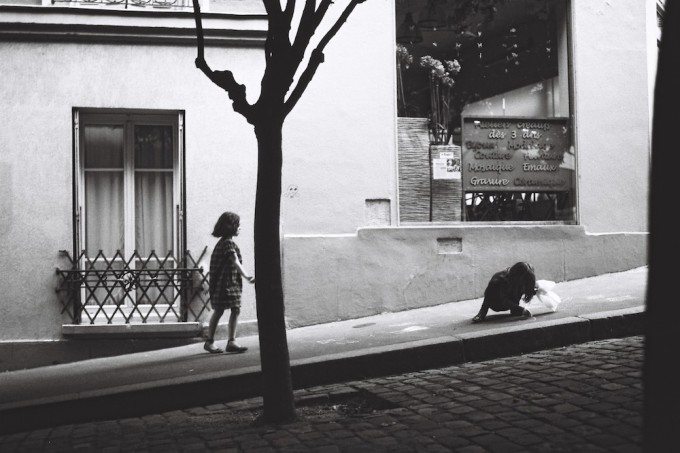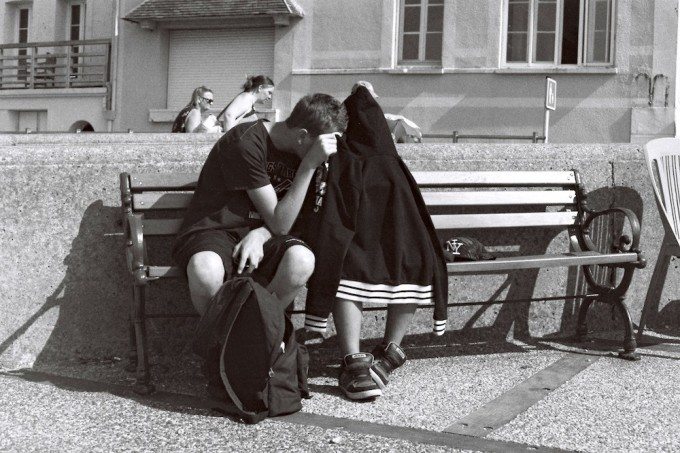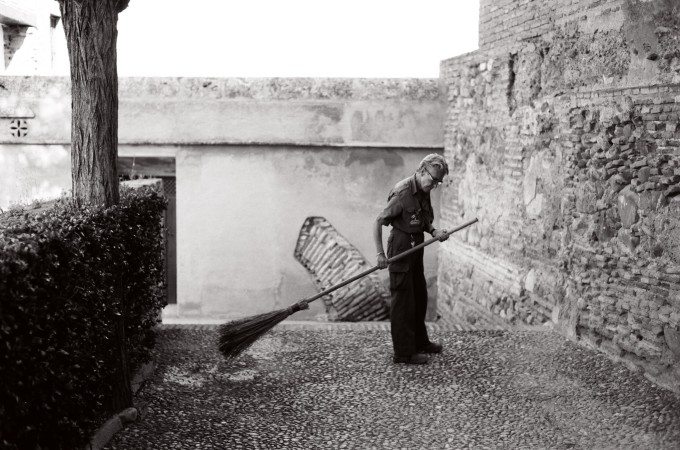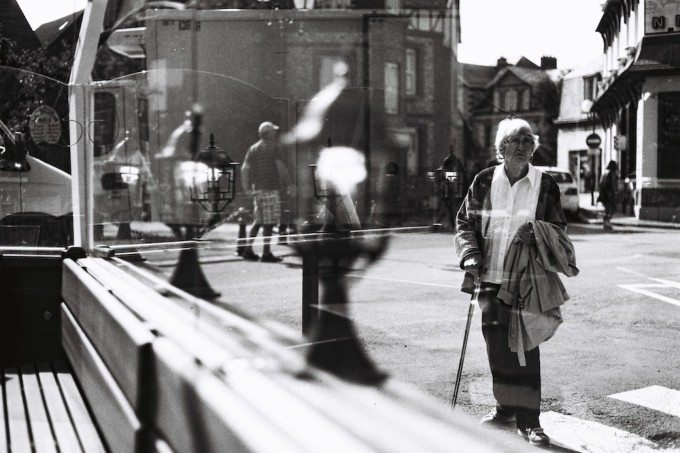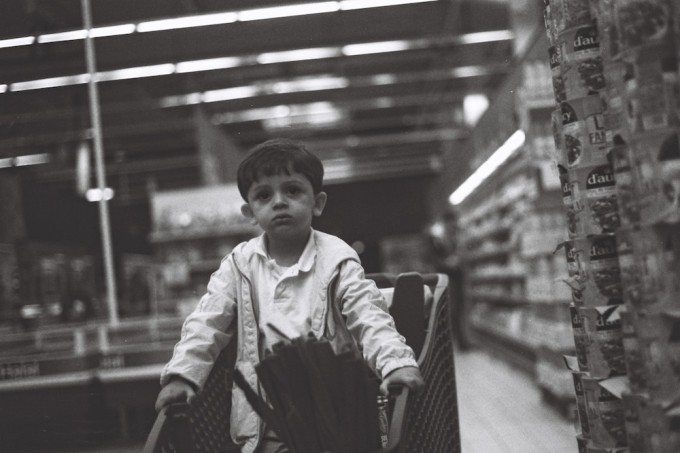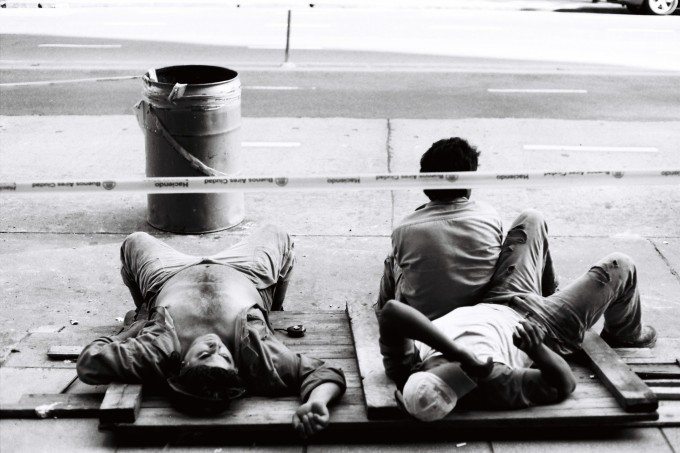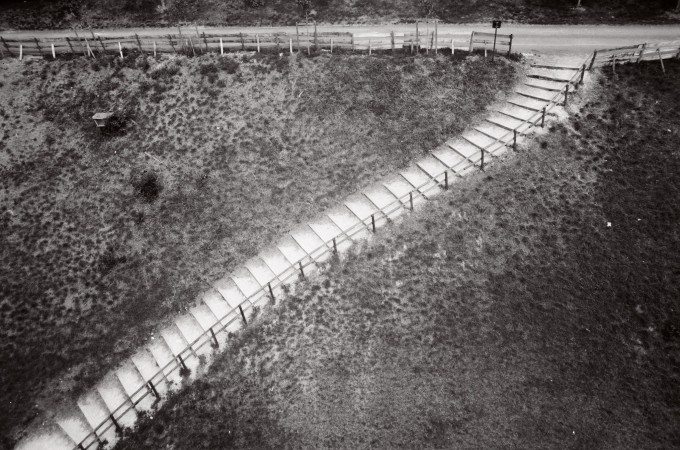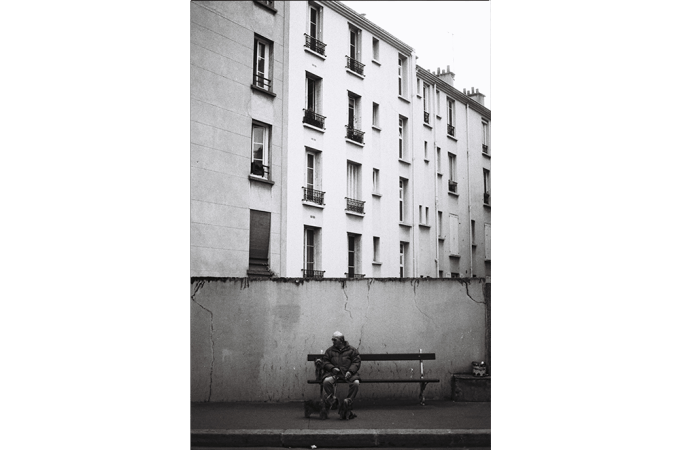All images by Andy Fabrykant. Used with permission
Andy Fabrykant is a photographer that was born in Argentina but now lives in Paris. His work has been in four different galleries and tends to explore the human side of life. Though he shoots color, Andy’s most mesmerizing work is his black and white collection. Most of his work is in cinematography though, but the way that a cinematographer and a photographer look at the world can be quite similar.
We decided to talk to Andy a bit about his photographs and about shooting in the streets.
Phoblographer: Thinking in terms of black and white can be very tough for so many photographers because many of us see in color. But to be as good as you are, you have to think in that way. what are some things that you always keep in mind?
Andy: I would like to give you a straight answer and say that it is easier to shoot in black and white because we have one less variable to worry about, but that makes sometimes things more complicated.
Shooting in black and white at first sight, frees us to think more about the composition, contrast, the subject / object that we are shooting or even in terms of quantity of light. When color is not present it lets us see things beyond what we are used to, we start to pay attention to other details. But it might be a double-edged sword, less doesn’t always mean easier.
We should also take into account the history of photography. Color came really late. I have the feeling that we are all attracted to black and white, it’s part of our history, it’s part of our heritage. It brings to the roots of photography.
Phoblographer: Your street photos have a very candid and sometimes shy feel to them. How did you first get over the fear of photographing people in public spaces?
Andy: You nailed it. The eternal struggle to get nearer. Unless it’s an object or a kid (but be careful!, “muscled dad” is always around) I am shy when I take my pictures. I guess it’s a problem that we all photographers have. But it is not only about being shy, people are afraid of cameras. Once that they notice us, they can get angry, they hide, even worse they stop doing what they would do naturally. I prefer taking the picture far away from the subject than interrupting their action. Some photographers decide to change their lens or carry a zoom lens to resolve this problem, but the depth of field is not the same as if we had a 50mm. I love 50mm, it is the closest to the human eye that exists.
Lately I started to create what I call “games” for several tasks, one of them: to get nearer. I keep my lens, for example at 1 meter, so I have to be at that distance to take the picture.
I also try not to get noticed, I use black cloth and I hide my cameras as much as I can. I prepare the camera giving my back to the subject so he doesn’t see it, if I have time to do so. The thing that works the most is after taking the photo continue to look at something next to the person, as if I had taken a picture of something else. I might even make a “fake” photo of what it is next to this person to show them that it’s not in them that I am interested. But I guess that every time is different, the goal is not to get noticed and be able to be as close as possible.
Phoblographer: The photos look very olden. Tell us about the gear you use. Do you shoot film?
Andy: I still shoot film, but not because I dislike digital. I grew up with film, it’s what I am used to. The same with my camera (Pentax k1000), I just feel comfortable with it and probably I will keep on shooting with it. The problem with digital is that we take a lot of pictures with different exposures or we change the focus, we even put it in automatic and we check afterwards the result. We don’t think before taking the picture. That makes us loose the momentum and it doesn’t let us handle exactly what we are looking for. It makes us lazy. I always said that someone who knows how to use a manual camera can easily switch to a digital one, but I think that it would be really hard to do it backwards.
It really depends on the project if I use digital or manual cameras. It’s like a painter that decides to use oil or acrylic painting, it depends what you are looking for.
About the look of my pictures, I am sometimes looking for that olden look. Still shooting film is part of that look. But mostly I try to find a character to correspond to the background or viceversa.
I have a Pentax k1000 (Actually 6 different models) that I mostly use with a 50mm and a Leica R4. I have a Leica R lens Kit (24,28,35,50,60 macro, 90, 135, 180mm) but I use it mostly to make films or an specific project.
Phoblographer: What’s your dream photo gig?
Andy: I always wanted to be a war photographer. I have the feeling each time that something big happens in the world I am missing it, that I should be there with my camera.
Please Support The Phoblographer
We love to bring you guys the latest and greatest news and gear related stuff. However, we can’t keep doing that unless we have your continued support. If you would like to purchase any of the items mentioned, please do so by clicking our links first and then purchasing the items as we then get a small portion of the sale to help run the website.
Also, please follow us on Facebook, Google+, Flickr and Twitter.


